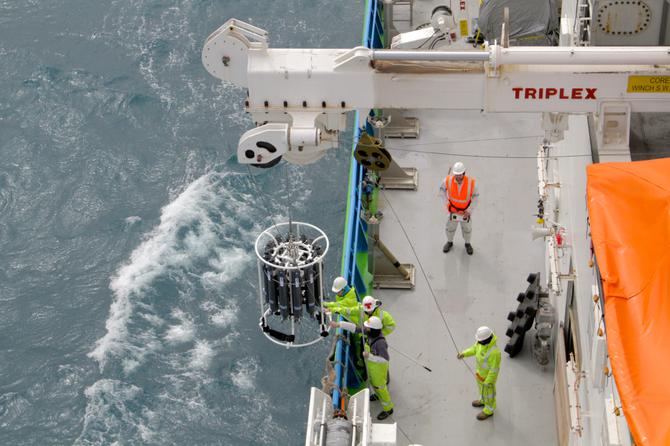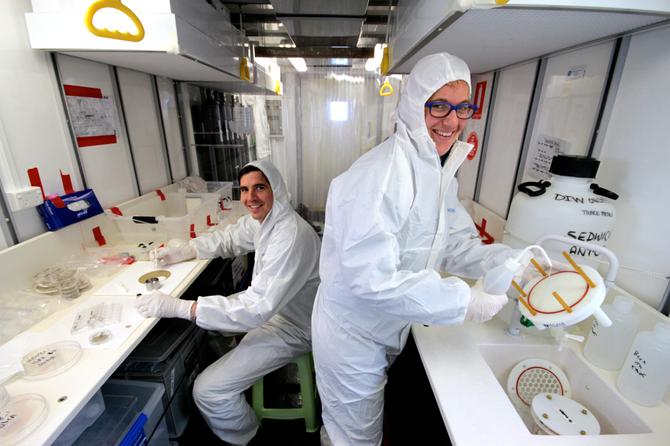A major IMAS voyage to the Southern Ocean has ended in Hobart with the arrival of the CSIRO’s Marine National Facility research vessel Investigator after a 16, 000 kilometre journey.
The voyage made news around the world when scientists on board Investigator caught a rare glimpse – and even rarer video footage – of an eruption of the Big Ben volcano on Heard Island.
But the voyage’s Chief Scientist, IMAS Professor Mike Coffin, said the researchers’ main goal was to study the link between underwater volcanoes and the mobilisation of iron which nourishes and supports marine life in the Southern Ocean.
“Over the last seven weeks we’ve seen that Heard and McDonald are active volcanoes, and we’ve mapped and dredged young volcanoes on the seafloor around the islands,” Professor Coffin said.

Big Ben erupting. Image by Pete Harmsen.
In the coming months we’ll analyse the water samples, rock samples, and data we collected, and look for the ‘smoking gun’ which links those volcanoes to the iron-rich waters that support the growth of phytoplankton, the foundation of marine life and source of half of the oxygen in Earth’s atmosphere.
Co-Chief Scientist, Associate Professor Andrew Bowie, said it would be a world-first if the voyage’s results proved a link between solid Earth processes associated with hotspot volcanism and biological processes in the ocean.
Iron is critical to life in Southern Ocean waters which, apart from isolated regions such as the Kerguelen Plateau around Heard and McDonald Islands, are essentially anaemic and do not support much life.

Trace metal rosette (a key piece of equipment to take samples) being deployed on the ship.
“During the voyage we found that near shore, the shallow waters around Heard and McDonald islands contain elevated and non-limiting concentrations of dissolved iron, and our challenge now is to identify the source of that iron.”
Professor Richard Arculus from the Australian National University, Co-Chief Scientist and a world-leading volcano expert, said the voyage provided a bonanza for volcanologists.
“We discovered and recovered rocks from three submarine volcanoes around the McDonald Islands, documented an active eruption taking place at the summit of Big Ben volcano on Heard Island, and recovered rocks from a major debris avalanche on Heard Island which likely preserve a considerable portion of the volcano's eruptive history,” Professor Arculus said.

Dr Pier van der Merwe and Dr Kathrin Wuttig in the clean deck lab.
Professor Coffin said the majority of their voyage’s research had been completed despite Investigator returning a week early to allow the medical evacuation of one of the scientists.
The Investigator voyage left Fremantle on 8 January 2016 with 26 scientists and students on board from IMAS, the Antarctic Climate and Ecosystems CRC, the University of Tasmania, the Australian National University, CSIRO, the University of New South Wales, the Pierre and Marie Curie University/CNRS’s (France) Microbial Oceanography Laboratory (LOMIC), the University of Western Brittany’s (France) European Institute for Marine Studies (IUEM), and the Scripps Institution of Oceanography, University of California, San Diego, USA. Also joining the voyage were two artists supported by the Australia Council for the Arts and a photographer/cinematographer.
This project is supported by the CSIRO’s Marine National Facility, Australian Research Council, and Australian Antarctic Science Program.
Interested in diving into research? Apply now to become a research student.